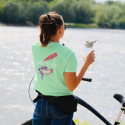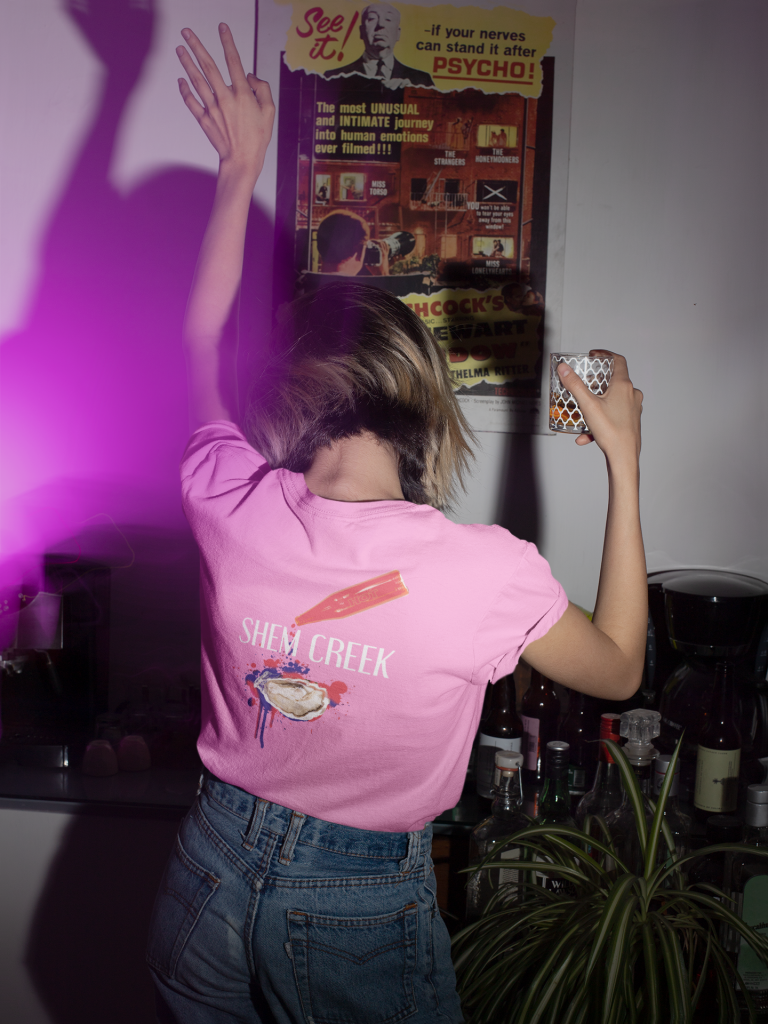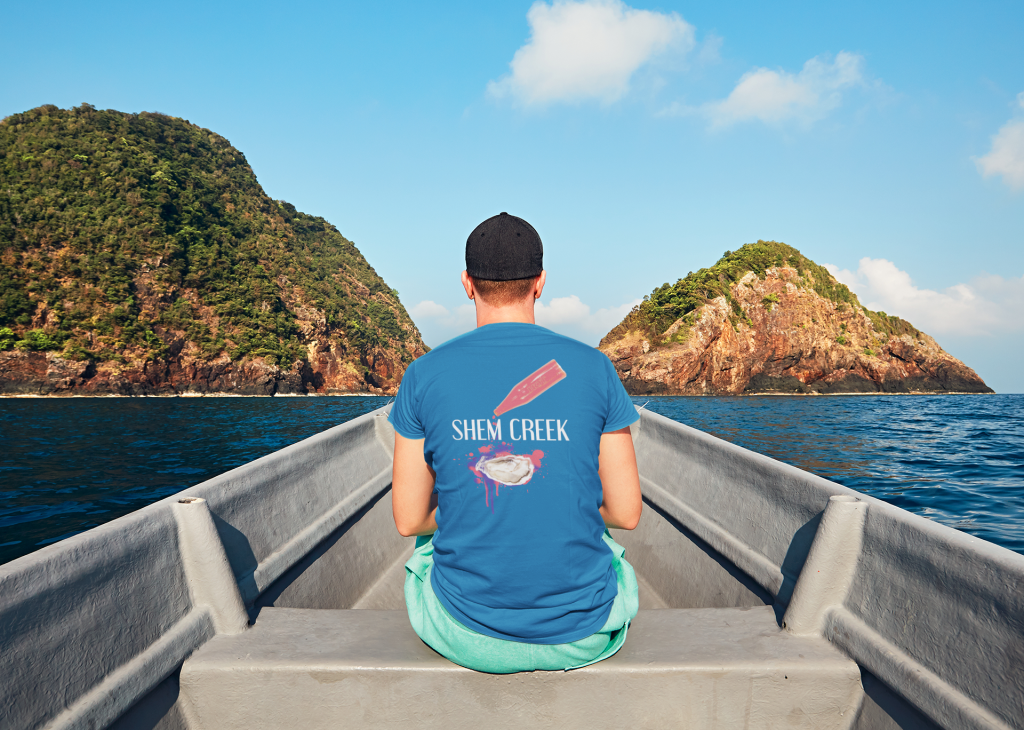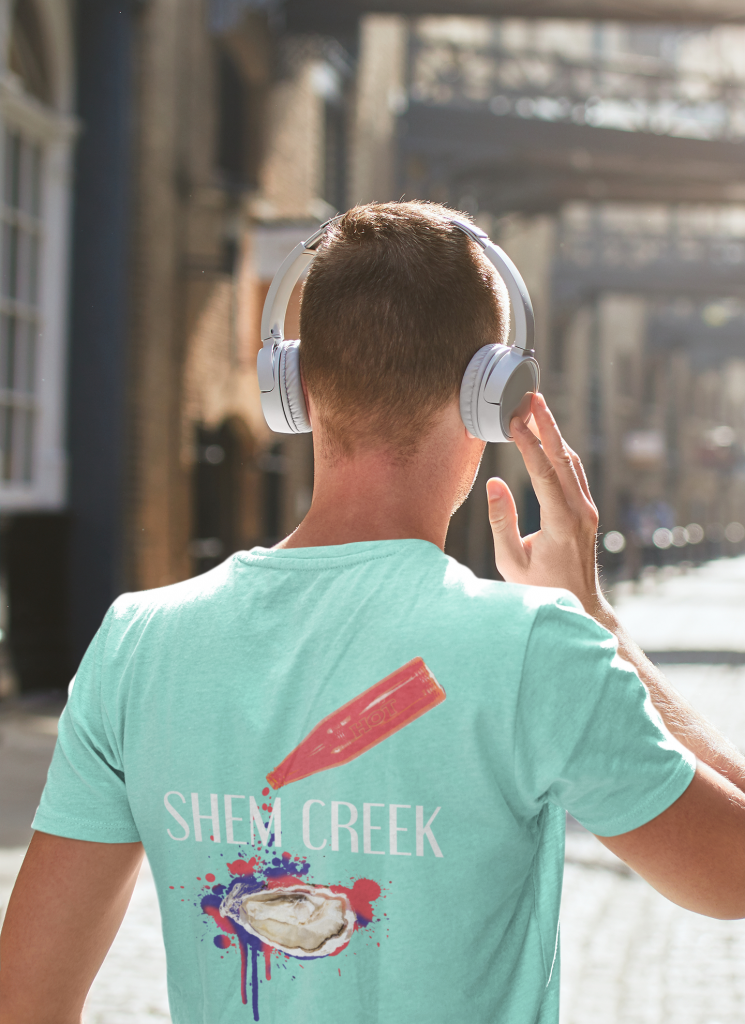Your cart is currently empty!
Author: Capt. Chris
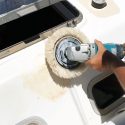
Boat Detailing Checklist
When boating season starts to wind down for most of us, it’s a little easier to justify spending a day to get our pride and joy looking great again.
Here is a list of items to consider when you’re looking to detail your boat.
- Clean all sinks and toilets
- Clean those seats! It’s important to stay on top of keeping seats clean so mildew doesn’t have time to take hold.
- Clean all fiberglass surfaces. Keeping the fiberglass clean helps to reduce oxidation and makes it easier to keep it clean.
- Clean all fiberglass surfaces. Keeping the fiberglass clean helps to reduce oxidation and makes it easier to keep it clean.

- Vacuum the carpet or rent a carpet cleaner. Home Depot, Lowes and many grocery stores will rent carpet cleaners at minimal expense.
- Clean and polish all the stainless steel on the boat. If any stainless is beyond polishing, go ahead and replace it before it becomes too corroded to get loose easily.
- Clean and polish all plastic surfaces. Use a plastic polish (hatches, doors, etc…)
- Clean all glass, mirrors and wood
- Freshen up any bottom paint if your boat has it
- Wash and remove any stains on the hull of the boat
- Compound and polish out all Oxidation on the hull
- Apply Carnauba wax (Grade #1) to the hull and hand buff to a shine. This helps to KEEP the boat clean longer.
- Clean all of the storage compartments, remove old gear that isn’t needed, remove rust stains with naval jelly, etc.
- Apply a protectant to any vinyl to seal it, waterproof it and help to keep it clean and mildew-free
- Polish all plastic windows, wind screens and curtains
- Apply rain x to windows
- Clean and wash all top side surfaces including non-skid surfaces, transom, swim platform, etc.
- Clean the equipment, electronic or map console areas
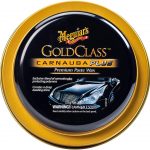
- Remove any stains on top side surfaces
- Compound and polish out all oxidation on the top side surfaces
- Apply Carnauba Wax (Grade #1) to all top side fiberglass surfaces
- If you have any Teak wood, sand, treat or refinish as needed
- Take a moment to inspect and clean the engine compartment. A little normal cleaning will go a long way toward prevent buildup of grease and will help to keep plastics from becoming brittle over time.
- Clean your bilge and make sure there isn’t any standing water. Many boats now are composite only construction and it isn’t as critical but I’ve seen countless boats with some wood construction destroyed because water was allowed to build up in the bilge. Get the water out!
- Clean all sinks and toilets
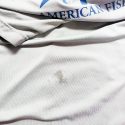
Fish blood stain removal Instructions
This is the best blood stain remover for getting dry blood stains out of clothes, tshirt or shorts.
It is only a matter of time before we get some fish blood on our favorite fishing shirt. No matter how careful you are, if you wear it on the boat, it’s getting splattered eventually. Some say it adds street cred. My wife just thinks it’s nasty.
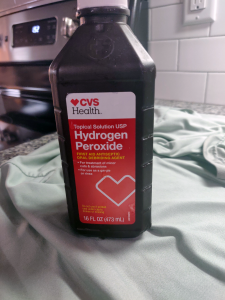
I’ve put together a couple tips so you can learn how to remove blood stains yourself. The most important thing is you try to remove it as soon as it happens. The longer it sits, the worse it is. If you can hit it while you’re on the boat still with the washdown pump or a little lake water, it can help to keep it from setting in and making it permanent.
When you’re trying to get blood out, always USE COLD WATER!
Get some cotton balls (gauze or rags work too) and saturate a couple cotton balls with Hydrogen peroxide.
Put your extra rags, gauze or cotton balls underneath the fabric to catch any moisture from the peroxide.
Start “blotting” the area where the stain is, keep blotting until the stain is gone.
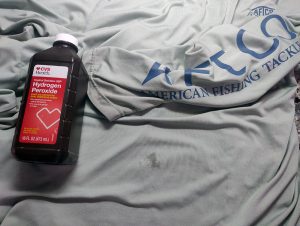
This method is preferred since it is pretty easy on the fibers and will not leave a stain ring. Still, be careful because hydrogen peroxide can bleach or damage fabrics. You may want to spot test. Also, be sure you clean out all the Hydrogen Peroxide BEFORE washing. Use COLD water.
For particularly difficult blood stains on Tshirts, you can actually put the stain over a cup or bowl and pour it through the stain, catching it underneath. This method is a little more aggressive so use this as a last resort.
Friends of mine also report good results using oxiclean. Just follow the directions on the bottle.
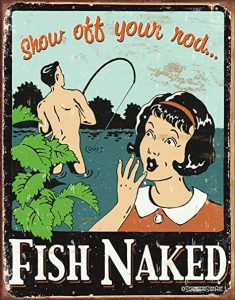
If all else fails and you REALLY get tired of ruining your favorite shirt…. JUST FISH NAKED
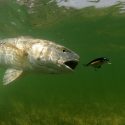
Ecology of the Sciaenops ocellatus (Redfish)
Note the eyespots on the redfish. Nearly every red drum will have the eyespot near the tail. Some fish may have only the single spot, others might have five or size spots.
The redfish is a member of the drum family. The color varies from copper-colored to nearly silver on the sides, with a white belly. The red drum is easily distinctive from the closely related black drum due to the fact it lacks the barbels of the latter. Redfish additionally typically have one or more eye-spots close to the base of the tail.
Range
Redfish are found from northern Mexico to Cape Cod.
Size
Redfish can grow up to 60 inches. The world record fish weighs an amazing 94 lbs. Most fish grow to a size of approximately 40 inches and 25-30lbs, though fish bigger than this aren’t all that uncommon. Most fish caught inshore weigh between 1 and 10 lbs, though bull reds are also present in inshore waters at least part of the year.
Habitat
The redfish lives in nearshore waters, and is observed everywhere from estuaries to a few miles offshore. Younger fish prefer to remain in protected areas like bays, inlets, and estuaries, whilst large fish stay mainly in open waters, even though they will spend time in covered waters to hunt. Mature adults spawn in areas with high salinity and tidal flow, such as passes and the mouth of inlets, or between barrier islands.
Redfish are frequently discovered near structure. Oyster bars, sandbars, grass beds, and reefs are all top hunting grounds for redfish, although they can additionally be located in open water over a mud bottom. They are typically discovered close to the bottom, although they will on occasion feed close to the surface. Shallow flats are another favourite hang-out of red drum, where they are frequently viewed tailing as they root out crabs, shrimp, and small fish.
Reds are a schooling fish; every school is comprised of comparable sized individuals. So if you seize a puppy drum the rest of the fish are likely of a comparable size, likewise if you seize a bull red most of the other fish are in all likelihood bulls as well. Sometimes they will school with different species as well such as black drum, speckled trout, and tarpon.
Feeding Habits
Redfish feed on a broad range of prey. Crabs, shrimp, fish and marine invertebrates make up the bulk of their diet. They typically feed on or close to the bottom, however will feed throughout the water column if the chance offers itself.
While not particularly speedy swimmers, they are capable of a rapid burst of speed that enables them to seize smaller, extra agile fish. Reds additionally like to work in schools to make bait fish “ball up.” This makes it that much less complicated to seize the prey, since the tightly packed bait in the ball has much less room to maneuver.
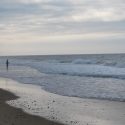
Surf Fishing for Redfish
Surf fishing for red drum is popular on the East coast. It requires a slightly special method than fishing for reds in protected waters. A lengthy surf rod is normally employed to get the baits out to the redfish, and heavy weights are wanted to stop the baits from being washed returned to shore. Pyramid sinkers get the nod over egg sinkers due to the fact they have the capacity to dig into the soft sand bottom, providing a a good deal better hold.
A common surf setup would be a 10-12 ft rod with a smooth-casting, high-capacity reel. A pyramid sinker is tied to the bottom of a two-hook rig, and the hooks are generally baited with a dead bait fish (either complete or chunk) or a dead shrimp.
Scout the seashore before fishing. You are searching for cuts and troughs in the surf. For exceptional results, fish your baits both in the cuts or in the troughs at the back of small bars. Small areas of quiet water are additionally viable hotspots; these are created when small sandbars lengthen out from the beach and then bend or hook parallel to the shoreline. The surf breaks on the seaward side of the bar, leaving the water nearer to the shore much less disturbed.
Bait fish will are seeking for safe haven and rest in these areas of calm, and the redfish will searching for out the baits hiding there. In some areas, old pier pilings or finger jetties jut out into the sea; the leeward aspect of these structures are additionally fantastic locations to look for drum.
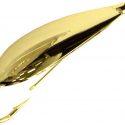
How to Catch Redfish on Lures
Red drum easily take artificial lures. A red jighead with a white grub and pink tail is killer. Redfish will additionally take just about any other mixture of jighead and soft body; test in your vicinity to locate the right fit. Use a stop -and-go rhythm when fishing a jig, permitting the jig to contact the bottom and then two or three speedy jerks before permitting it to sink once again.
Many kinds of plugs, both surface and suspended, work well. Even freshwater crankbaits can be effective. Match the colorations to the bait. If your vicinity has a lot of mullet, a mullet-patterned top-water can furnish you with a thrilling morning. Not only will redfish blow up on it, but trout, bluefish, skipjack, even flounder will hit it. If you do not have a lot of mullet in your area, use whatever kind of baitfish is common in your area. Red/white patterned plugs are usually a good standby.
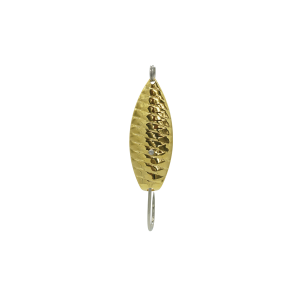
For first-rate results, cast your lure either parallel to the structure being fished or past it, and retrieve it as close as you can manage without snagging. Redfish are capable of a mind-blowing surge of speed when they want, however typically might not go too far out of their way to chase a bait. And always finish your retrieve. Sometimes a redfish will follow a bait for a few yards before deciding to hit it.
A gold spoon has long been the standby lure for redfish. A slow, consistent retrieve with an occasional pause is deadly. Silver spoons work nicely also.
Trolling a spoon or a diving plug can produce redfish when other techniques fail. In fact, in some locations trolling a gold or bronze spoon is desired over all different techniques of fishing for reds. Trolling speeds are commonly round 1-2 knots, however can be excessive as 3-4 knots.
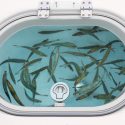
How to Catch Red Drum with Natural Bait
Using live bait to catch redfish
Live bait is a fantastic way to catch redfish. Red fish will readily take a range of live baits. Croakers, menhaden, spot, pinfish, mullet and small scaled sardines are all appropriate selections for redfish. Many red drum are caught every year on live shrimp, crabs, and blood worms as well.
Live bait is fished either free-lined, below a popping cork, or on a slip-lead rig. A popping cork is the favored approach in shallow water with low visibility or at night. A free-lined bait is a better choice for clearer shallow waters during the day. A slip lead ought to be used when fishing deeper water, or in areas with a lot of current, to hold the bait down in the water column and in the strike zone.
Redfish respond nicely to chum. Setup on the up-current aspect of the structure, and let your chum line float back to the structure to entice the reds and/or bait fish to your location. Any kind of structure can have reds close to it, however oyster beds, grass beds, sandbars, and dock pilings are normally your best bet.
Use shrimp heads, ground fish, or ground crab meat combined with cornmeal to attract them. Menhaden milk or oil is additionally a suitable attractant. If you do not feel like messing with ground fish or menhaden oil, a couple of cans of cat food can make a first rate chum line. Punch a few holes in the top of the can, and suspend it in the water. Give the can a shake every now and then and you are on your way. Alternately, you can chum up the bait fish that the reds like to feed on. Use a combination of cornmeal and bread balls to get the bait fired up. By pulling the bait fish away from their hiding places, you supply the reds with an opportunity to feed.
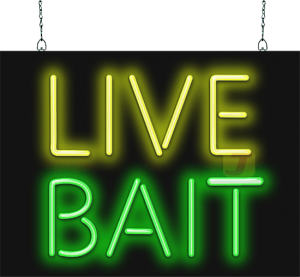
If you are going to go the chumming route, I advocate waiting till you have the fish fired up in the chum line before drifting back a bait. You additionally want to use a free-lined bait when chumming so that your bait drifts back naturally with the chum. It is essential to hold slack in the line for the same reason. Once the fish hits the line will come tight, and by means of the usage of circle hooks the hook will set itself. Still, after the fish is on a mild jerk can make certain an excellent hook set.
If you do not use chum, you want to get your baits to the redfish. Look for them close to structure. Work the lee side of bars and pilings for first-class results. When fishing deeper water structure with a slip lead, fish the lee facet (down-current) and depart a little bit of slack in the line as soon as the lead hits the bottom. If a red drum picks up the bait and immediately feels strain it might drop the bait rather than eat it.
Live-bait trolling can be a very fine way of discovering redfish, in particular when they are scattered. Your trolling velocity ought to be just enough to hold steerage, about 1 kt or less. In shallow water a trolling motor is even better, given that it does not disturb the fish the way a gasoline or diesel engine will. Troll alongside the edges of grass beds, sandbars, oyster bars, and other redfish holding structures. Good options for trolled baits are shrimp (hook them thru the horn), mullet, and different hardy baitfish. Crabs typically do not make a proper presentation when trolling.
A couple of notes about the use of crabs for bait. First, make sure that any crab you use for bait is legal. Each state has unique rules, so be certain to take a look at your state’s legal guidelines before the use of any species of crab as bait. Some people like to do away with the crabs’ claws to improve hit rates. While I’m not certain it has any impact on the bite, getting rid of the claws does make it a lot less complicated to take care of the baits. And it gives a handy place to place the hook; simply run the hook into the socket from the place you removed the claw. If you aren’t positive you will use all the crabs you have for bait and plan on releasing them after fishing, the use of a rubber band to preserve the claws closed can lead to fewer pinched fingers when getting a new bait out of the live well or bait bucket.
Crabs must be kept on a short leash. Keep them away from structure or they will hole up in cover and never be eaten.
Dead Bait for Reds
Redfish are easily enticed to take a range of dead baits as well. Chunks of mullet or different bait fish work well. Peeled shrimp are some other favorite. If you are having trouble with ‘trash’ fish consuming the baits when you are focused on bull reds, butterflying the bait may additionally make it too big for trash fish to eat, whilst the big red will have no trouble swallowing the bait.
Dead baits are nearly always fished on a slip-lead setup, to maintain the bait in one spot, permitting the scent to draw the redfish to it. A 24-36 inch chief is ideal. Leave a bit of slack in the line, just as you would with live baits, to enable the red to pick up and eat the bait.

A Carolina rig can be adapted to be used with larger hooks, leaders, etc based on conditions and fish to be targeted. The exception to this is if you are fishing a chum slick. If you are fishing with chum, drift a chunk lower back via the chum line with no weight on it to enhance your probabilities of a hook-up.
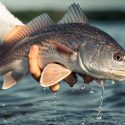
Gear and Tackle for Redfish
Redfish can be caught with a range of tackle, depending on the place you are fishing for them and what size fish you are pursuing. You can use anything from ultra-light equipment for “puppy” drum in estuaries and at river mouths to massive traditional reels for trolling baits with a heavy downrigger for huge “bull” drum.
Inshore Redfish
Redfish caught inshore are typically smaller than those caught offshore, and usually are caught in shallower water as well. Tackle can be scaled down accordingly.
An ultra-light, light, or medium-light rod is typically adequate for redfish caught inshore, the two exceptions being in the fall around passes where you will desire to scale-up your tackle to manage the bull reds; and trolling usually requires heavier gear, unless performed at very gradual speeds (more of a managed drift than trolling).
A reel with spooled with 200 yards of 10 lb test is best for inshore fishing. A proper drag is always important, as is top quality line. Inspect your line prior to fishing to make sure the line is not frayed or brittle, or you will lose fish.
Redfish rigs do not need to be complicated. The easiest setup is the freeline setup. Just tie a hook onto the line, and you are done. Nothing fancy, and it will catch a ton of fish. A variant of this setup is the leadered freeline. Instead of tying the hook straight to the mainline, you connect a leader to the line either using a swivel or an Albright or blood knot.
A word about leaders. Redfish do not have sharp teeth, and therefore may not chew you off. They do stay near structure, however, and a leader may additionally help forestall break-offs. Another cause for a leader is that many toothy fish, like bluefish and Spanish mackerel, inhabit the same waters as reds and can also bite you off. If you appear to be getting a lot of bite-offs, think about including a leader in the 20 to 25 lb range. Fluorocarbon works best, even though a well known mono leader will additionally work.
Another popular setup is the popping cork setup. A popping cork is positioned 18-36 inches above the hook. This suspends the bait up in the water column, and the sounds and vibrations from the cork attract the redfish. This is especially good at night time or in murky water and other low-visibility conditions.
The last setup we will talk about is the ‘slip-lead’ setup. In this setup, an egg sinker is connected above a swivel and a leader with a hook is tied to the different end of the swivel. The length of your lead will depend on what depth you are fishing and how quickly the current is, deeper water and quicker currents suggest larger leads. Larger leads should not be used in shallow waters as the splash might also startle fish and cause them to scatter or flee.
A 3/0 to 6/0 circle hook will work nicely for most inshore redfish.
Nearshore Redfish or Bull Reds
Redfish caught offshore, or bull reds caught in a pass at some stage in the spawn, require heavier tackle. Medium-heavy or heavy rods are ideal, with a big reel spooled with at least 250 yds of 30-lb line. Big reds can be caught on lighter tackle however this will frequently lead to the fish dying in the course of or right after the fight. Better to use heavier tackle and release the large ones alive.
The same setups used for inshore redfish can be used for bulls or offshore reds, however a large hook (5/0-8/0) ought to be used. Base your hook size on the size bait you will be using.
Trolling Tackle for Redfish
Trolling tackle for redfish should consist of at minimum, medium-light rods and a reel spooled with at least 250 yds of 20-lb test. Trolling puts a ton of stress on a rod and reel, especially if you use deep-diving type plugs.
